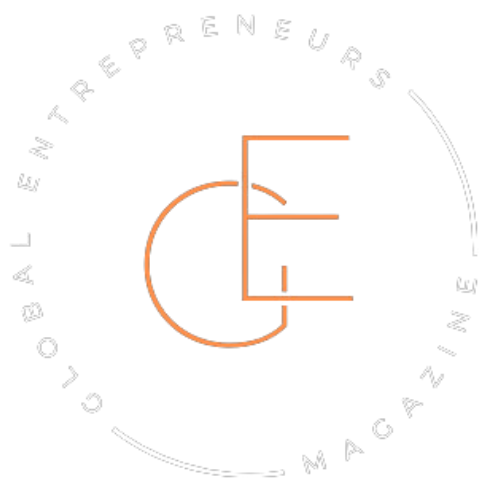In a world where manufacturing is often overshadowed by other sectors, Tony Gunn, an acclaimed international consultant, emerges as a passionate advocate for revitalizing the industry, particularly in the United States. With an impressive travel resume covering over 80 countries and an eloquent narrative style that captures the essence of global manufacturing challenges and opportunities, Gunn’s insights reveal a strategic roadmap for enhancing American manufacturing.
The Global Manufacturing Landscape: A Diverse Tapestry
Gunn’s journey across the world as an international consultant has gifted him with a profound understanding of the divergent manufacturing landscapes. From the bustling assembly lines of Asia to the technologically advanced hubs of Europe and the U.S., he has witnessed firsthand the contrasts in manufacturing approaches. Central to this discourse is the adoption of automation and artificial intelligence—a necessity in high-cost countries grappling with labor shortages.
“While automation in regions like Vietnam and India remains slow due to affordable labor, developed nations are forced to innovate. Here in the U.S., we have to,” Gunn asserts, emphasizing the necessity for technological integration to remain competitive in a global market where other nations exploit their labor surplus for economic gains.
Confronting the Challenges of American Manufacturing
In stark contrast to the global scene, the United States faces unique challenges. Gunn paints a vivid picture of an industry plagued by an aging infrastructure and educational deficits that perpetuate a skills gap. The stereotypes that trades are meant for those unable to pursue higher education further exacerbate these challenges, he notes.
“Valedictorians are choosing trades over university paths, breaking the myth that trades are for the less academically inclined. It’s crucial to debunk this stereotype to rejuvenate our manufacturing sector,” Gunn emphasizes. His call to action for changing societal perceptions underscores the necessity for a cultural shift that sees the value in vocational education and its role in economic revival.
Beyond societal perceptions, Gunn discusses the infrastructural decay and the need for new foundries and facilities to house the rebirth of American manufacturing. “We shipped off so much over the years; now we have to rebuild,” he notes, scathingly addressing the need for investment in physical and educational infrastructure.
Harnessing Automation and AI: The Technological Imperative

Gunn extols the virtues of integrating automation and AI into the manufacturing process, not as threats but as allies in the revitalization effort. These technologies enhance operational efficiency, allowing fewer individuals to manage multiple machines and leading to increased productivity and innovation. Gunn’s insights align with a global trend towards smart manufacturing, where data and technology drive decision-making and operational efficiencies.
“There’s a need to educate manufacturers about the profitability of automation despite its initial costs,” he insists. Gunn champions this as a practical solution to the labor shortage and skills gap—an essential pivot for a nation eager to reclaim its manufacturing prowess.
The Entrepreneurial Spirit and Manufacturing
For Gunn, manufacturing isn’t just an industry—it’s a bedrock for innovation and entrepreneurship. He romanticizes the universally foundational nature of manufacturing, from creating cutting-edge technologies to household items. “Manufacturing is the birthplace of entrepreneurship, where ideas are transformed into reality,” Gunn passionately states, positioning it as an ideal industry for those aiming to make tangible impacts.
Capitalizing on this spirit, he emphasizes the crucial role of entrepreneurs in reinvigorating American manufacturing through creativity and innovation. The sector, in his view, offers limitless opportunities for aspiring entrepreneurs to leave their mark on society.
Investing in America: The Untapped Potential
While Gunn acknowledges the formidable challenges facing the industry, his vision for American manufacturing remains optimistic. He ardently believes in the untapped potential of U.S. manufacturing—a sentiment echoed through his advocacy for investments. He envisions a future where the government and private enterprises align to bolster manufacturing through incentives and strategic funding, akin to investing a billion dollars into burgeoning companies.
“There’s no better place to start than right here in the U.S.,” he declares, highlighting the nation’s abundance of space, resources, and creative minds. Gunn advocates for a national movement to make the most of these assets, paving the way for a manufacturing renaissance that he believes will support communities, build a robust middle class, and foster economic resilience.
A Renewed Call to Action
Gunn’s discourse is both a testament to a global perspective and a clarion call—urging stakeholders to invest in manufacturing’s future. It’s a call to awaken an industry that makes the world a better place, touching on everything from healthcare innovations to everyday conveniences. As he narrates, it becomes clear that revitalizing American manufacturing is not just an economic necessity but a patriotic endeavor to invigorate the industry’s creative and entrepreneurial spirit.
For business leaders, entrepreneurs, and policymakers, Gunn’s insights provide a roadmap for addressing current challenges while leveraging technological advancements for future growth. His vision denotes a transformative shift in American manufacturing—a shift ripe with potential, awaiting the concerted efforts of a nation willing to reclaim its status as a global manufacturing leader.




